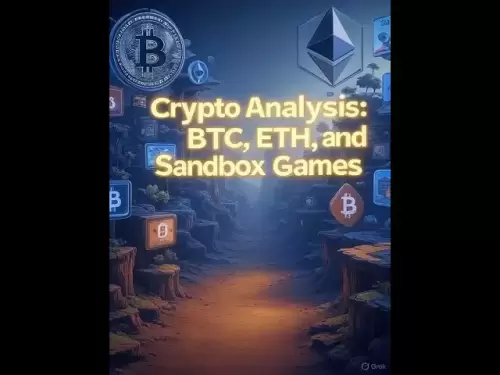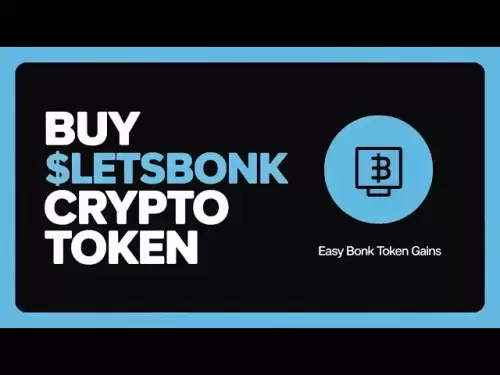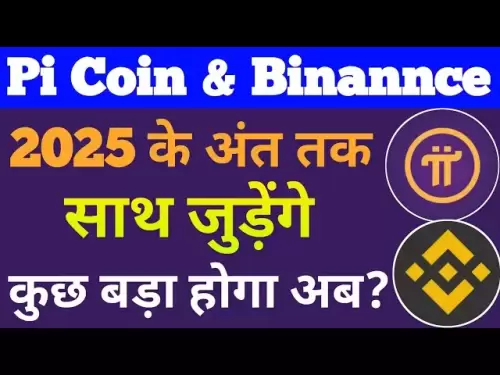-
 Bitcoin
Bitcoin $118100
-0.44% -
 Ethereum
Ethereum $3585
5.43% -
 XRP
XRP $3.434
5.65% -
 Tether USDt
Tether USDt $1.000
0.02% -
 BNB
BNB $743.8
3.89% -
 Solana
Solana $178.7
3.84% -
 USDC
USDC $1.000
0.03% -
 Dogecoin
Dogecoin $0.2381
12.81% -
 TRON
TRON $0.3270
3.62% -
 Cardano
Cardano $0.8315
4.93% -
 Hyperliquid
Hyperliquid $44.51
-4.42% -
 Stellar
Stellar $0.4710
1.52% -
 Sui
Sui $3.896
-2.51% -
 Chainlink
Chainlink $18.09
6.98% -
 Hedera
Hedera $0.2681
9.31% -
 Bitcoin Cash
Bitcoin Cash $516.7
4.83% -
 Avalanche
Avalanche $23.95
6.96% -
 Shiba Inu
Shiba Inu $0.00001490
5.67% -
 UNUS SED LEO
UNUS SED LEO $8.966
0.80% -
 Toncoin
Toncoin $3.294
4.39% -
 Litecoin
Litecoin $105.4
4.69% -
 Polkadot
Polkadot $4.356
5.30% -
 Uniswap
Uniswap $10.29
17.25% -
 Monero
Monero $327.9
-3.04% -
 Bitget Token
Bitget Token $4.942
4.33% -
 Ethena USDe
Ethena USDe $1.001
0.08% -
 Pepe
Pepe $0.00001348
2.17% -
 Dai
Dai $1.000
0.02% -
 Aave
Aave $320.8
0.58% -
 Bittensor
Bittensor $411.8
-4.07%
Programmatic contract transactions using Python
Programmatic contract transactions automate interactions with blockchain networks by executing smart contracts using a programming language, like Python, for increased efficiency, customization, and cost savings.
Feb 22, 2025 at 12:42 pm

Key Points
- Understanding programmatic contract transactions
- Benefits of using programmatic contract transactions
- Prerequisites for programmatic contract transactions
- Steps for programmatic contract transactions using Python
- Debugging and error handling in programmatic contract transactions
- Best practices for programmatic contract transactions
- Examples of programmatic contract transactions
Article Content
1. Understanding Programmatic Contract Transactions
Programmatic contract transactions are automated interactions with a blockchain network, where smart contracts are executed using a programming language. Unlike manual transactions initiated through a wallet interface, programmatic transactions are executed through custom-written code, allowing for complex interactions and the automation of routine tasks.
2. Benefits of Using Programmatic Contract Transactions
- Automation: Automate repetitive or time-consuming tasks, such as portfolio rebalancing or arbitrage trading.
- Efficiency: Reduce human error and increase the speed of transaction execution.
- Customization: Tailor transactions to specific needs, such as customized order types or complex trade strategies.
- Cost Savings: Eliminate intermediary fees associated with manual transactions.
- Enhanced Control: Gain direct control over the transaction process and access advanced features not available through standard wallets.
3. Prerequisites for Programmatic Contract Transactions
- Blockchain Development Knowledge: Familiarity with blockchain fundamentals, smart contract concepts, and the relevant programming language.
- Blockchain Network Access: Node or API connectivity with the blockchain network to send and receive transactions.
- Smart Contract Deployment: Deploy the relevant smart contracts on the blockchain and obtain their addresses.
- Programming Environment Setup: Install the required programming language and any necessary libraries.
4. Steps for Programmatic Contract Transactions Using Python
a. Connect to the Blockchain Network:
- Establish a connection to the blockchain network using a node or RPC client.
- Use libraries like web3 or Etherscan to simplify the connection and transaction processes.
b. Create and Sign a Transaction:
- Define the transaction parameters, including the recipient address, value, and any data needed for the smart contract call.
- Sign the transaction using the private key associated with the sender's wallet.
c. Send and Confirm the Transaction:
- Broadcast the signed transaction to the blockchain network using the connected node.
- Wait for the transaction to be confirmed by multiple nodes and included in a block.
d. Monitor the Transaction:
- Track the status of the transaction using web3 or other transaction monitoring tools.
- Debug and troubleshoot any errors that may occur during the transaction process.
5. Debugging and Error Handling in Programmatic Contract Transactions
- Thorough Testing: Execute the code on different scenarios and test conditions to identify and resolve any potential issues.
- Logging and Tracing: Enable logging to record all transaction-related events and trace the execution path for debugging purposes.
- Error Handling: Implement robust error handling routines to catch and handle exceptions, such as failed connections or invalid transactions.
- Monitoring and Alerts: Set up alerts to monitor the performance of the programmatic transactions and notify in case of any anomalies.
6. Best Practices for Programmatic Contract Transactions
- Security: Always prioritize the security of the private keys and the smart contracts used in the transactions.
- Efficiency: Optimize the code to minimize gas costs and transaction latency.
- Modularity: Break down complex transactions into smaller modules to facilitate maintenance and debugging.
- Documentation: Thoroughly document the code and transaction process for readability and future reference.
- Security Auditing: Engage in regular security audits to identify vulnerabilities and improve the overall security of the process.
7. Examples of Programmatic Contract Transactions
- Automated Portfolio Rebalancing: Automatically adjust the allocation of assets within a portfolio based on predefined rules.
- Arbitrage Trading: Scan for and execute arbitrage opportunities across multiple exchanges in real-time.
- Token Distribution: Distribute newly issued tokens to multiple recipients based on specified criteria.
- Multi-Signature Transactions: Facilitate transactions requiring the approval of multiple authorized parties.
- Custom Order Types: Create and execute customized order types, such as stop-loss orders, using smart contracts.
FAQs
Q: What are the main advantages of using Python for programmatic contract transactions?
A: Python's versatility, simplicity, and extensive library support make it a popular choice for blockchain development. Web3, a Python library, simplifies the process of interacting with blockchain networks, creating transactions, and managing smart contracts.
Q: How do I secure programmatic contract transactions?
A: Prioritize the security of your private keys and smart contracts by implementing strong encryption mechanisms, regular security audits, and a robust error handling strategy. Monitor transactions closely to detect any suspicious activities.
Q: What is a Solidity smart contract?
A: Solidity is a high-level programming language specifically designed for developing smart contracts on the Ethereum blockchain. Smart contracts are self-executing contracts that run on the blockchain, enabling the creation of decentralized and automated applications.
Q: How can I estimate the gas cost of programmatic contract transactions?
A: Use gas estimation tools provided by web3 or other blockchain utilities. These tools help you calculate the transaction cost before execution, allowing you to optimize the efficiency of your transactions.
Q: Where can I learn more about programmatic contract transactions?
A: Refer to the documentation for the web3 library, explore online tutorials and resources for blockchain development, and join relevant community forums for sharing knowledge and troubleshooting.
Disclaimer:info@kdj.com
The information provided is not trading advice. kdj.com does not assume any responsibility for any investments made based on the information provided in this article. Cryptocurrencies are highly volatile and it is highly recommended that you invest with caution after thorough research!
If you believe that the content used on this website infringes your copyright, please contact us immediately (info@kdj.com) and we will delete it promptly.
- Freedom Gold Pack: The Legacy Coin Defining 2025
- 2025-07-19 06:30:13
- Trump, the GENIUS Act, and Stablecoin Regulations: A New Era for Crypto?
- 2025-07-19 06:50:12
- Pi Network's Ecosystem Challenge: App Studio Sparks Innovation
- 2025-07-19 06:55:13
- Zebec Network's Bullish Engulfing Pattern: Price Forms and Future Outlook
- 2025-07-19 06:30:13
- XRP, Ripple, Bitcoin, Ethereum: Decoding the Crypto Landscape
- 2025-07-19 05:50:13
- Penny Altcoins Eyeing $1 in Q3 2025: Cardano, BlockchainFX, and the Hunt for Crypto Gold
- 2025-07-19 05:10:13
Related knowledge

What is a maker vs a taker fee?
Jul 19,2025 at 01:14am
Understanding the Basics of Cryptocurrency Exchange FeesIn the world of cryptocurrency trading, maker vs taker fees are a fundamental concept that eve...
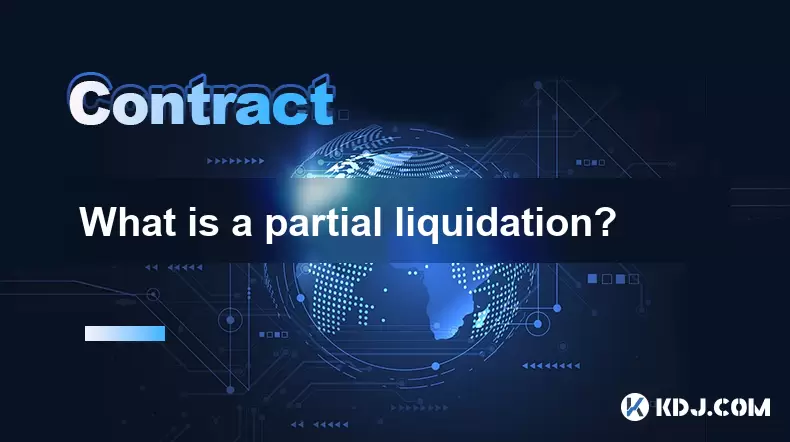
What is a partial liquidation?
Jul 19,2025 at 01:49am
Understanding the Basics of Partial LiquidationIn the world of cryptocurrency trading, especially within leveraged positions, partial liquidation refe...
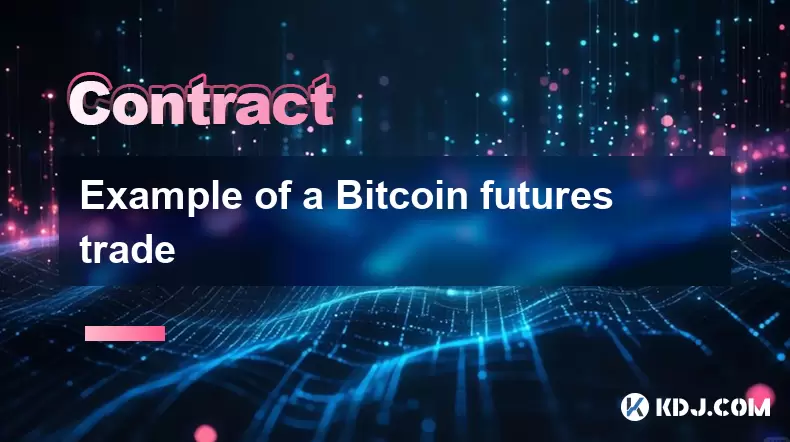
Example of a Bitcoin futures trade
Jul 19,2025 at 12:43am
Understanding Bitcoin Futures TradingBitcoin futures trading is a financial instrument that allows investors to speculate on the future price of Bitco...

Can US citizens trade on Bybit or Binance futures?
Jul 18,2025 at 10:14pm
Understanding the Legal Status of US Citizens on Global Crypto ExchangesThe question of whether US citizens can trade on Bybit or Binance futures is o...
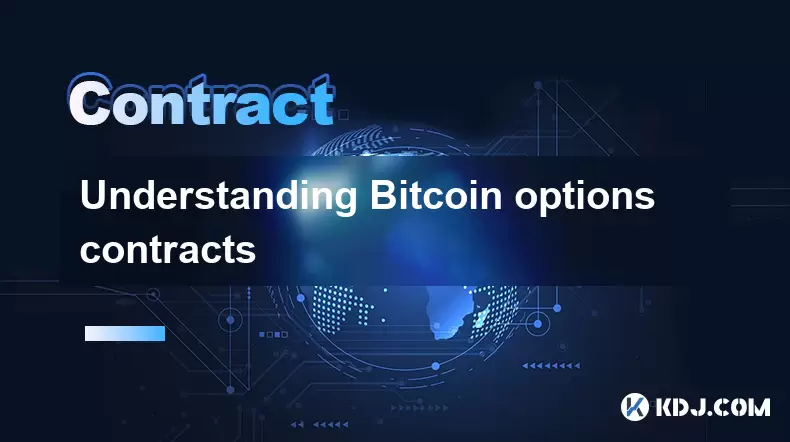
Understanding Bitcoin options contracts
Jul 18,2025 at 10:56pm
What Are Bitcoin Options Contracts?Bitcoin options contracts are financial derivatives that allow traders to speculate on the future price of Bitcoin ...
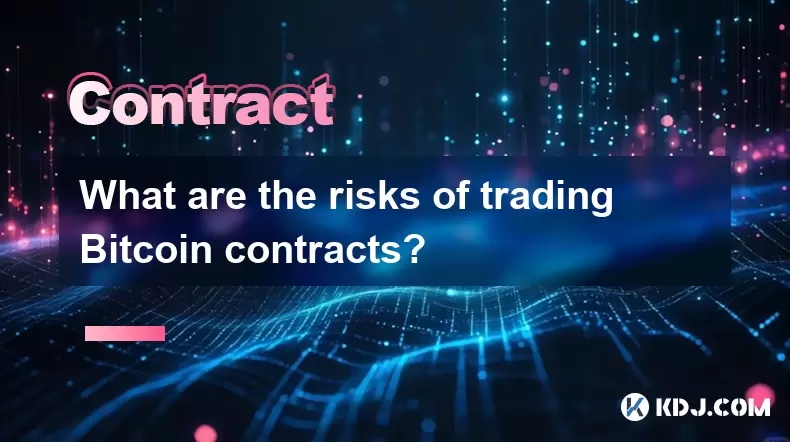
What are the risks of trading Bitcoin contracts?
Jul 19,2025 at 03:49am
Market Volatility and Price FluctuationsTrading Bitcoin contracts involves exposure to extreme market volatility, which is one of the most significant...

What is a maker vs a taker fee?
Jul 19,2025 at 01:14am
Understanding the Basics of Cryptocurrency Exchange FeesIn the world of cryptocurrency trading, maker vs taker fees are a fundamental concept that eve...

What is a partial liquidation?
Jul 19,2025 at 01:49am
Understanding the Basics of Partial LiquidationIn the world of cryptocurrency trading, especially within leveraged positions, partial liquidation refe...

Example of a Bitcoin futures trade
Jul 19,2025 at 12:43am
Understanding Bitcoin Futures TradingBitcoin futures trading is a financial instrument that allows investors to speculate on the future price of Bitco...

Can US citizens trade on Bybit or Binance futures?
Jul 18,2025 at 10:14pm
Understanding the Legal Status of US Citizens on Global Crypto ExchangesThe question of whether US citizens can trade on Bybit or Binance futures is o...

Understanding Bitcoin options contracts
Jul 18,2025 at 10:56pm
What Are Bitcoin Options Contracts?Bitcoin options contracts are financial derivatives that allow traders to speculate on the future price of Bitcoin ...

What are the risks of trading Bitcoin contracts?
Jul 19,2025 at 03:49am
Market Volatility and Price FluctuationsTrading Bitcoin contracts involves exposure to extreme market volatility, which is one of the most significant...
See all articles
























